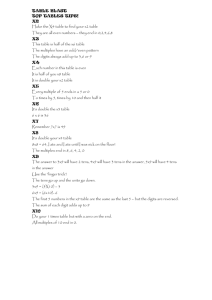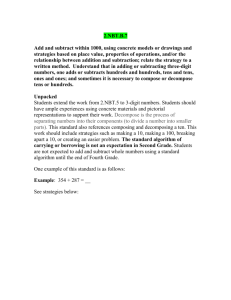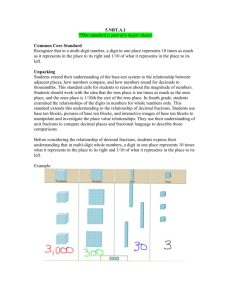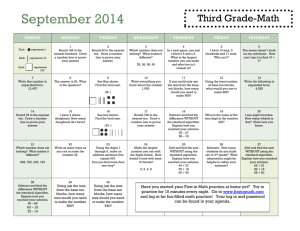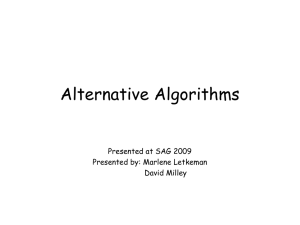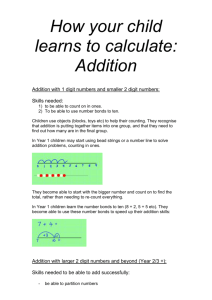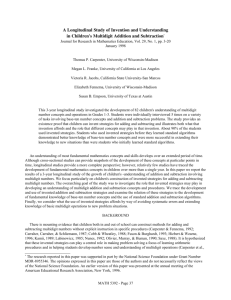Strategies for Whole
advertisement
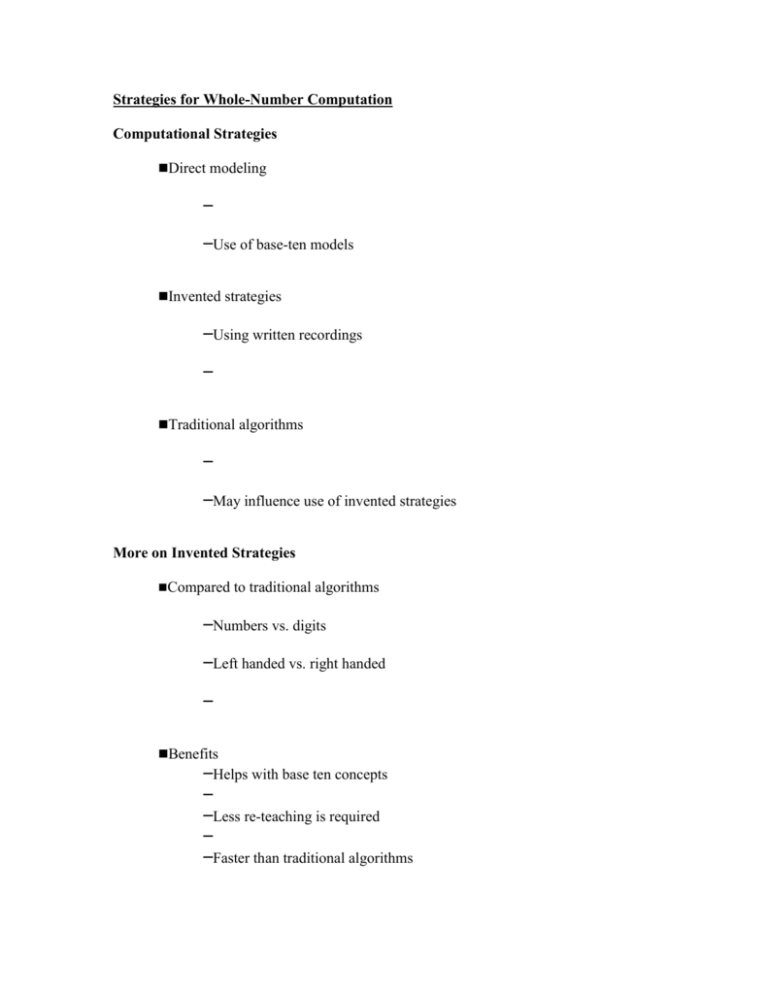
Strategies for Whole-Number Computation Computational Strategies Direct modeling – –Use of base-ten models Invented strategies –Using written recordings – Traditional algorithms – –May influence use of invented strategies More on Invented Strategies Compared to traditional algorithms –Numbers vs. digits –Left handed vs. right handed – Benefits –Helps with base ten concepts – –Less re-teaching is required – –Faster than traditional algorithms Developing Invented Strategies Use story problems Discuss student’s solutions Choosing numbers Integrate place value development Move away from direct modeling Invented Strategies Addition and subtraction –Single digits –Tens and hundreds Adding two digit numbers –Add tens, ones, then combine – –Move some to make tens – Subtraction –Counting up Add tens to get close, then ones Add tens to overshoot, then come back Add ones to make a ten, then tens and ones –Take-away subtraction Take tens from the tens, then subtract ones Take extra tens, then add back Traditional Algorithms Addition –Begin with models –Written record Subtraction –Begin with models –Zeros –Written record Multiplication Invented strategies –Useful representation –Single digit multiplier Complete-Number Strategies Compensation Strategies –Using multiples of 10 and 100 Traditional Algorithms –Written record One digits – – Two digits – Division Invented strategies –Sharing and measurement problems – Traditional Algorithms –Use of models –Written record Early Fraction Concepts Fractional Parts Sharing –Story problems Fraction language –Number of parts – Models –Area –Length –Sets Fraction Symbols Fractional-parts counting Top and bottom numbers –What is the bottom number? –What is the top number? Mixed numbers – Parts and whole tasks –Given the whole and the fraction, find the part –Given the part and the fraction, find the whole –Given the whole and the part, find the fraction Fraction Number Sense Understanding of zero, one-half, and one Which is more? –Focus on concepts –Conceptual thought patterns for comparisons More of the same size parts Same number of parts but parts of different sizes More and less than one-half or one whole Distance from one-half or one whole –Fractions tell us about relationship between part and whole Estimation – Equivalent-fraction concepts – –Use of models

